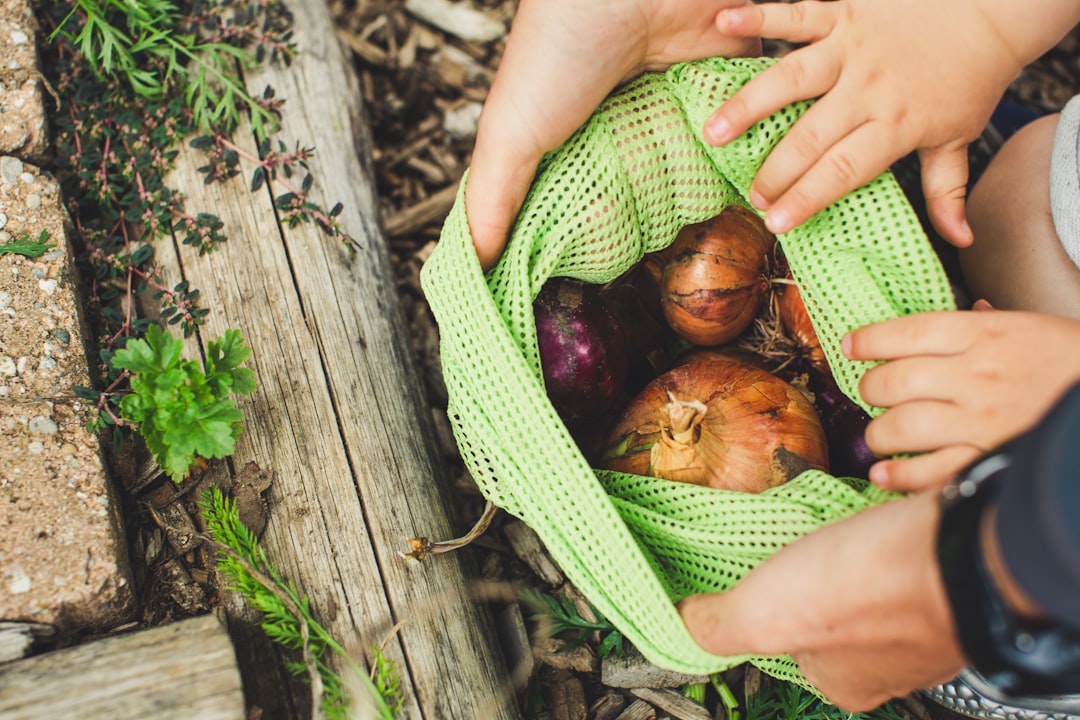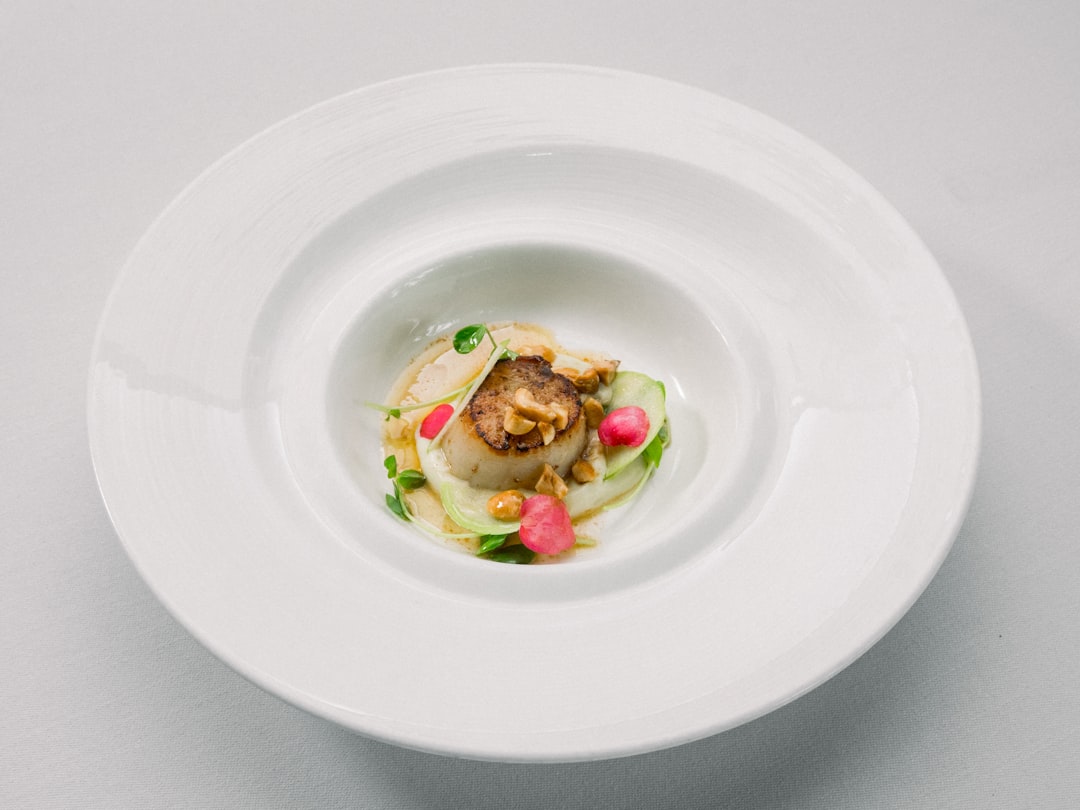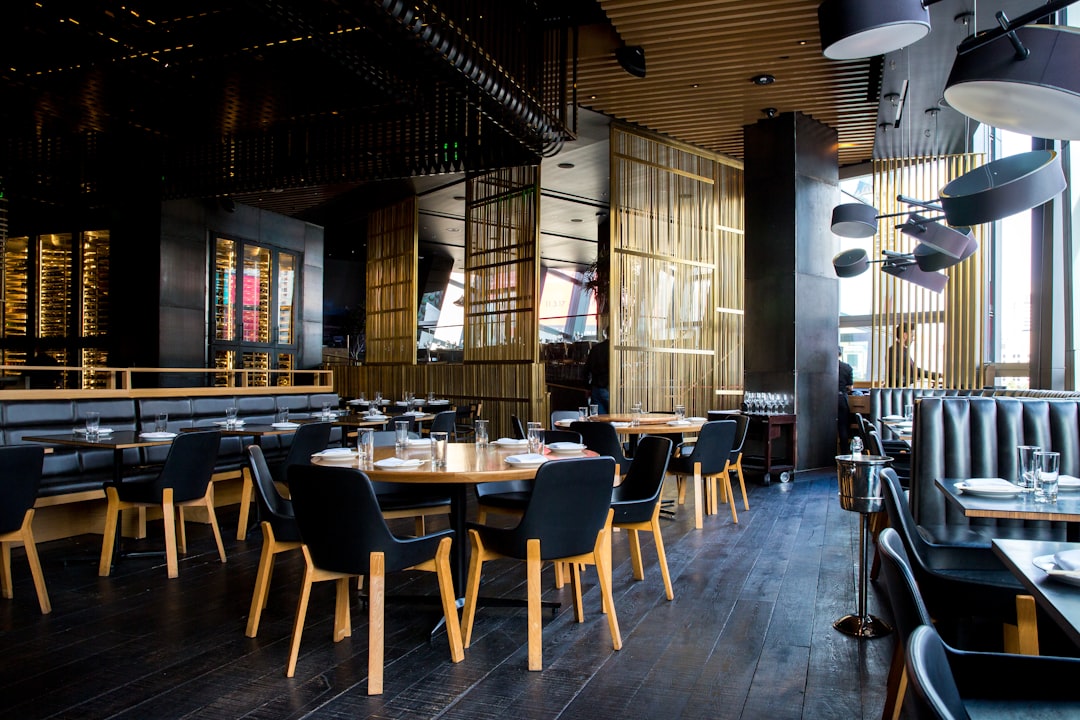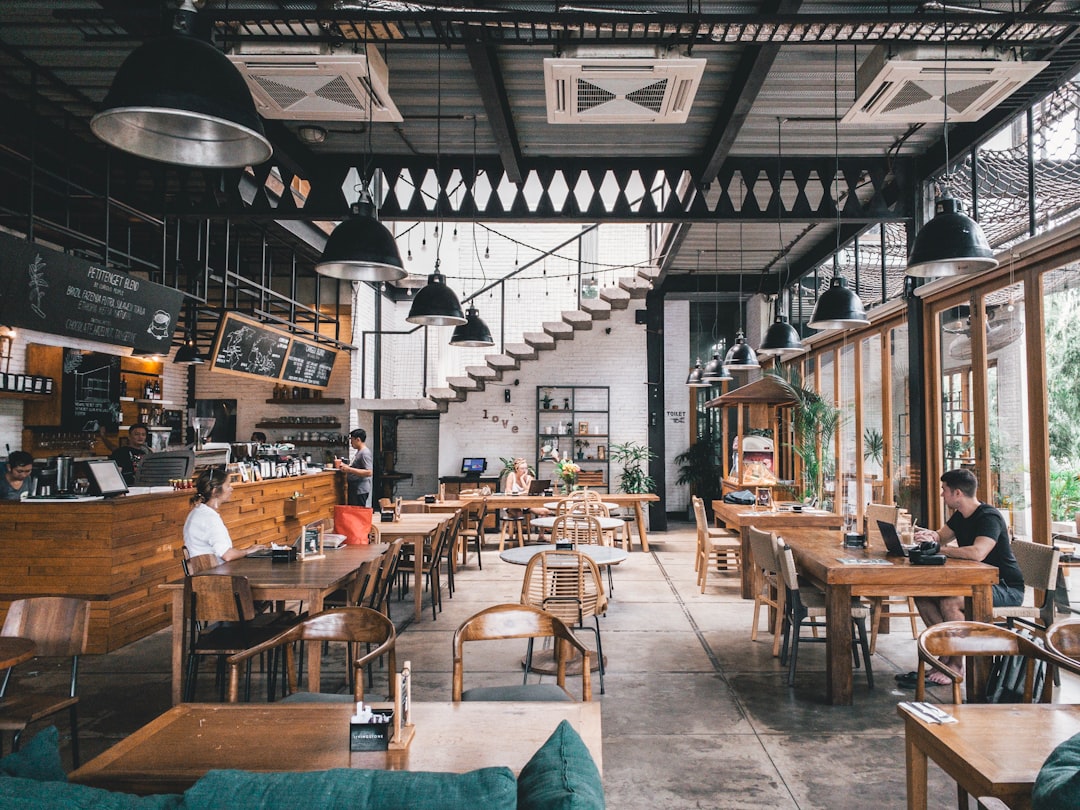From Fish Bones to Forest Ferns: How a Restaurant in Finland is Pioneering Zero Waste Dining
From Fish Bones to Forest Ferns: How a Restaurant in Finland is Pioneering Zero Waste Dining - Composting More Than Leftovers

At Nolla, chef Juha Berglund is taking food waste reduction to the next level by composting far more than just leftovers. This pioneering Helsinki restaurant aims to send absolutely nothing to the landfill, composting every possible scrap of food waste.
While many eco-conscious restaurants compost leftover cooked food, trimmings, and spoiled produce, Nolla goes above and beyond by also composting typically discarded byproducts like fish bones, eggshells, and vegetable peels. These nutritious food scraps get sent to a local urban farm to be turned into rich compost for growing more food. According to Berglund, "We want to showcase just how much unused nutrition we throw away on a daily basis."
Ingredients that some chefs would deem worthless are transformed into menu items at Nolla. For instance, broccoli stems often get tossed in home and restaurant kitchens. But Nolla's chefs finely chop and sauté these crunchy stems into a flavorful side dish. Carrot tops also commonly wind up in the trash after the carrots are chopped, yet Nolla uses these vibrant greens to make pesto.
Finding culinary uses for every edible part of ingredients that might otherwise be discarded not only reduces food waste, but also adds more nutrients to diners' meals. It takes creativity and an open mind, but Berglund and his team relish this challenge. As the chef puts it, "We get excited about what we can make from these overlooked ingredients - it forces us to think outside the box."
What else is in this post?
- From Fish Bones to Forest Ferns: How a Restaurant in Finland is Pioneering Zero Waste Dining - Composting More Than Leftovers
- From Fish Bones to Forest Ferns: How a Restaurant in Finland is Pioneering Zero Waste Dining - Transforming Inedible Parts Into Delicacies
- From Fish Bones to Forest Ferns: How a Restaurant in Finland is Pioneering Zero Waste Dining - Minimizing Food Waste Through Creative Menus
- From Fish Bones to Forest Ferns: How a Restaurant in Finland is Pioneering Zero Waste Dining - Eliminating Plastic and Paper with Reusable Options
- From Fish Bones to Forest Ferns: How a Restaurant in Finland is Pioneering Zero Waste Dining - Making Use of Every Last Scrap in the Kitchen
- From Fish Bones to Forest Ferns: How a Restaurant in Finland is Pioneering Zero Waste Dining - Employing Local and Seasonal Ingredients
- From Fish Bones to Forest Ferns: How a Restaurant in Finland is Pioneering Zero Waste Dining - Educating Customers on Sustainability Efforts
- From Fish Bones to Forest Ferns: How a Restaurant in Finland is Pioneering Zero Waste Dining - Leading the Industry Towards a Greener Future
From Fish Bones to Forest Ferns: How a Restaurant in Finland is Pioneering Zero Waste Dining - Transforming Inedible Parts Into Delicacies
At Nolla, the chefs are masters at transforming ingredients that most would deem inedible into mouthwatering delicacies. This aligns perfectly with their zero waste mission, allowing them to utilize the whole plant or animal. According to Berglund, "We strive to serve dishes where guests won't even recognize what's on their plate as a 'waste' item." Getting diners to crave these unused parts has taken plenty of experimentation, but the results are worth it.
Take rutabagas, for instance. Many restaurants would throw away the leafy green tops once the root vegetable is peeled. But Nolla's chefs turn these autotrophic leaves into a vibrant chimichurri sauce. The bright tang pairs beautifully with steak, adding a pop of color and fresh flavor. Diners are consistently wowed when they find out the key ingredient was once bound for the compost bin.
Another genius zero waste application is turning discarded scallop frills into crispy crackling garnishes. Typically removed before cooking, these ruffled edges get deep fried into seafood chicharrones at Nolla. They provide a briny, crunchy topping for salads and pasta dishes. According to a top food critic in Helsinki, "The scallop scratchings are addictively good, with a rich umami taste of the ocean."
One of Nolla's most popular treats results from upcycling watermelon rinds. Most restaurants immediately cut away and trash the green outer layer once the pink flesh is removed. But Nolla dries these rinds to make refreshing fruit jerky. The natural sweetness gets concentrated, yielding a tangy candy-like crunch. It's both tasty and nutritious, packed with citrulline that reduces muscle soreness. Who knew throwaway melon peel could become such a coveted snack?
From Fish Bones to Forest Ferns: How a Restaurant in Finland is Pioneering Zero Waste Dining - Minimizing Food Waste Through Creative Menus
At Nolla, minimizing food waste starts right on the menu. Chef Berglund and his team get creative to make sure every single ingredient gets put to use across multiple dishes. Rather than defaulting to conventional cuts of meat and standard vegetable sides, the menu highlights unique zerowaste recipes. According to Berglund, "We design our dishes to utilize the whole plant or animal. No scraps go unused." This nose-to-tail and root-to-fruit philosophy means maximizing taste while minimizing waste.
For example, Nolla serves carrot hot dogs alongside pulled jackfruit tacos. Many would discard carrot tops and jackfruit cores, but these become filling plant-based proteins at Nolla. The carrots get chopped and seasoned, then tightly rolled into vitamin-rich vegan dogs. Meanwhile, the dense jackfruit cores get simmered into a fiber-full taco meat alternative. Diners rave about the earthy flavors and textures.
Another standout is Nolla's rutabaga fondue, served with bread chunks and veggies for dipping. Rutabaga tops are commonly tossed aside, but Nolla rescues these edible leaves. They get blended into a vivid green fondue infused with garlic, nutty gruyere, and white wine. It's a creamy, piquant crowd pleaser.
In the pastry station, you'll find treats like chocolate chip cookies studded with banana peels. Nolla air fries discarded peels into crunchy, caramelized bits for mix-in texture and nutrition. You'd never guess such a decadent dessert came from an often-overlooked food scrap.
Nolla also crafts an imaginative dish from two unlikely waste items: chicken skins and aging apples. Crispy crackling chicken skin gets incorporated into an autumnal Waldorf chicken salad. Meanwhile, bruised apples on their way to spoiling become sweet-tart pickles. It's a satisfying symphony of flavors and textures from ingredients other kitchens would toss.
From Fish Bones to Forest Ferns: How a Restaurant in Finland is Pioneering Zero Waste Dining - Eliminating Plastic and Paper with Reusable Options

From takeout containers to to-go cups, restaurants produce an abundance of plastic and paper waste. At Nolla, they are pioneering ways to eliminate these disposables in favor of reusable and compostable options. This aligns with their ambitious zero waste mission while also educating diners on more sustainable practices.
According to Berglund, "We want to showcase that reusable dishware and cutlery can work just as well, if not better than, single-use items." Nolla puts this ethos into practice by entirely doing away with plastic and paper across their culinary operations. No plastic straws stir cocktails, no styrofoam takeout boxes serve leftovers, and no paper napkins wipe lips.
Instead, drinks come with reusable metal straws and takeout gets packed into returnable glass jars. Tables feature cloth napkins along with bamboo cutlery that gets washed and sterilized after each use. Leftovers can even be toted home in durable lunchboxes brought back on the next visit. This cycle significantly reduces waste compared to countless disposables trashed after one use.
According to Berglund, these small changes add up to enormous impact. He explains, "Scaling reusable options across all our dining services has diverted thousands of single-use items from trash bins and oceans." Many patrons appreciate this commitment and become inspired to adopt similar habits at home.
Other sustainably-minded restaurants have followed Nolla's lead, partnering with dish rental services like Vaisselle. This French company supplies restaurants with durable dishware and transports it to an off-site facility for cleaning between uses. Culinary institutions across Europe have successfully incorporated this cyclical system into daily operations. It effectively eliminates disposable dishware waste without added labor for busy kitchen crews.
Of course, the key to these reusable models is cooperation from customers. But Berglund asserts that Nolla's diners seem eager to participate. "Most everyone appreciates the environmental benefits. A small deposit on loaned items helps ensure they get returned." Displaying costs and statistics associated with single-use waste also motivates patrons to get on board.
From Fish Bones to Forest Ferns: How a Restaurant in Finland is Pioneering Zero Waste Dining - Making Use of Every Last Scrap in the Kitchen

At Nolla, the chefs treasure ingredients that most kitchens would toss without a second thought. Vegetable peels, bacon fat, cheese rinds, beef bones - these scraps all get ingeniously repurposed into appetizing dishes. Nothing goes to waste, aligning perfectly with the restaurant's zero waste mission. According to chef Berglund, "We brainstorm ways to transform every last scrap into something tasty. It takes creativity and an open mind."
For instance, Nolla turns beet and carrot peels into vibrant vodka infusions. Most restaurants instantly throw these nutrient-rich skins in the trash. But Nolla blends the peels with vodka and simple syrup, yielding jewel-toned liquids with subtle earthy sweetness. They use the stunning infusions to make zero waste bloody mary's garnished with pickled asparagus ends.
Onion skins also get put to use at Nolla in the form of savory onion ash. These dried skins get ground into a mineral-rich seasoning that adds umami flair. It's reminiscent of salt or onion powder but with a super concentrated flavor. Nolla shakes the ash onto soups, salads, roasted veggies and more. Diners are blown away by how much "oomph" the subtle ash provides.
Perhaps the ultimate scrap usage comes in the form of Nolla's ham hock broth. Most restaurants instantly throw away these bony joints once the meat is removed. But simmering the hocks yields a rich, silky potlikker that forms the base for many of Nolla's soups and stews. Infusing the broth with ham essence and collagen gives a huge flavor boost. According to Berglund, "Our ham broth is too delicious not to make from leftover hocks."
Whey, the liquid byproduct of making cheese and yogurt, also gets put to use at Nolla. Instead of pouring this nutritious leftover down the drain, Nolla transforms it into tangy dressings and marinades. They also mix it into brines for poultry and pork. This helps tenderize the meat while infusing it with a tasty fermented tang.
Finally, Nolla upcycles aging citrus peels into a vivid syrup. As oranges, lemons and limes start to spoil, the skins get tossed into a simple syrup mixture. Once strained out, the resulting liquid makes a bright addition to cocktails and desserts. It provides the perfect balance of sweet and sour.
From Fish Bones to Forest Ferns: How a Restaurant in Finland is Pioneering Zero Waste Dining - Employing Local and Seasonal Ingredients

Sourcing local, seasonal ingredients is another key tenet of Nolla's zero waste mission. According to chef Berglund, "We design menus around what's abundant and at peak flavor during each season." This reduces carbon emissions from long distance transport while supporting regional agriculture. It also means capturing ingredients at their nutrient and taste peak, before spoilage necessitates wasting.
Nolla's menus morph throughout the year as availability shifts. In spring, dishes spotlight tender pea shoots, peppery radishes and sweet young carrots. Come summer, the restaurant celebrates juicy heirloom tomatoes, buttery corn and soft berries. For fall, forest mushrooms, hardy greens and winter squash rule the menu. And throughout the frigid winter, Nolla highlights root veggies and brassicas like parsnips, salsify and savoy cabbage.
According to Berglund, "We get excited transforming nature's bounty into delicious dishes that reflect the season." For instance, sweet lingonberries appear in fall on Nolla's menus in tangy sauces, soured cream, fruit preserves and more. This quintessential Nordic superfruit only reaches peak ripeness in the chilly autumn air, making it a prime seasonal selection.
Another fall specialty is cep-studded Barley Risotto, made from nutrient-dense ancient grains grown on a nearby biodynamic farm. Contrasting the earthy mushrooms and chewy barley are caramelized endives, another cool weather crop that grows sweeter after autumn's first frost.
Come summer, Nolla celebrates the return of midnight sun and long Nordic days with dishes like new potato and dill salad. Tiny fresh dug potatoes from the Swedish island of Gotland pair with fronds of aromatic dill, lemon and rapeseed oil. A topping of salty salmon roe harvested from the Baltic sea provides the perfect briny burst.
Nolla alsoCapitalises on peak season strawberries to craft an indulgent dessert each June. Local berries get macerated with aged balsamic and layered over coconut cream with crunchy popped amaranth and strawberry sorbet. The tangy vinegar and tropical cream intercept the tart berries for perfect balance.
In discussing seasonal sourcing, Berglund asserts, "We want to honor the Nordic legacy of working with what thrives here, not forcing ingredients against nature or importing produce out of season." This philosophy traces back to the New Nordic Cuisine movement, which reinvigorated Nordic pride. According to Berglund, "We are standing on the shoulders of giants." By leveraging local agriculture, Nolla aims to reduce food waste while celebrating their distinctly Nordic terroir.
Of course, sourcing seasonally demands constant creativity and menu reinvention. But Berglund insists this challenge enhances innovation and variety. He explains, "Guests love getting a taste of what's fresh and new each time they visit." It also makes diners more attuned to what grows in their region and the seasonality of produce.
From Fish Bones to Forest Ferns: How a Restaurant in Finland is Pioneering Zero Waste Dining - Educating Customers on Sustainability Efforts
Education is a critical component of Nolla's zero waste mission. According to chef Berglund, "We aim to be seen not just as a restaurant, but as an agent of change. Our goal is to inspire a lifestyle shift around consumption and sustainability." To achieve this, Nolla makes diners an active part of the experience through engagement and advocacy.
From the moment patrons arrive, Nolla provides eco-education. The entryway features an artful display illustrating statistics on single-use waste and disposable consumption rates. This visually impactful exhibit sets the tone and primes diners on Nolla's ethos. Tablets provide access to even more data for interested visitors.
Menus reinforce the mission by listing scraps used and waste savings for each item. For example, the caramelized salsify dish notes that both stalks and roots were upcycled. Meanwhile the rutabaga fondue quantifies gallons of water and pounds of carbon emissions saved by using typically tossed leaves. According to Berglund, "We want to bring awareness to overlooked aspects of food waste." Making the waste-saving visible and tangible has proven effective in engaging patrons.
The servers have sustainability expertise as well. Nolla trains staff not only on culinary preparation, but on the restaurant's eco-efforts. This empowers them to knowledgeably discuss topics like upcycling fish bones, closing resource loops, and reducing meat consumption. Many guests appreciate this passion and competence around sustainability. It stimulates discussion beyond typical food service pleasantries.
Nolla also partners with local environmental organizations to provide educational info. For example, they worked with the Baltic Sea Action Group (BSAG) to create brochures on the issue of eutrophication. These explain how diners' individual habits like meat-eating and fertilizer usage can help curb algal blooms. Making bigger topics digestible (pun intended) and actionable resonates with patrons.
To continue the learning after guests depart, Nolla distributes doggy bags and leftovers in reusable containers. On each to-go box, stickers outline how to upcycle parts like carrot tops and chicken bones at home. The restaurant also shares DIY videos and tips through their social media channels. According to Berglund, "We aim to be a sustainability resource even after diners' meals end."
Periodically, Nolla also offers hands-on workshops open to the public. Attendees have made natural cleaning and hygiene products using food scraps like citrus peels. During foraging excursions led by expert mycologists, guests have learned to identify edible plants and fungi including stinging nettles and chanterelle mushrooms. Pop-up classes teach participants how to pickle aging or ugly produce to prolong shelf life.
Other events spotlight skills like mending clothes, fermenting vegetables, and DIY-ing reused containers. Berglund explains the workshops aim to "empower visitors with practical waste-reduction habits to implement in daily life." Making sustainability fun and social helps drive adoption of long-term behavior change.
From Fish Bones to Forest Ferns: How a Restaurant in Finland is Pioneering Zero Waste Dining - Leading the Industry Towards a Greener Future
Nolla's pioneering efforts to eliminate restaurant waste don't stop at their own doors. Chef Berglund and his team aim to drive sustainability across Finland's entire hospitality industry by openly sharing their methods and motivating other chefs. According to Berglund, "Sharing our zero waste strategies is key to creating collective impact." This opportunity for widespread influence only amplifies their own restaurant's efforts.
For instance, Nolla partnered with Haaga-Helia culinary school to launch an educational initiative called "Whole Harvest." Aspiring chefs learn how to transform typically discarded food parts into refined dishes and artisanal products. Classes cover topics like crafting banana peel bacon, upcycling stale bread into beer, and fermenting fruit scraps into vinegars. By instilling future generations with a zero waste mindset, Nolla helps shift professional norms around waste.
The Nolla chefs also regularly host seminars to train fellow culinary professionals in scraps-focused cooking. Attendees have crafted rutabaga stem kimchi, chickpea peel hummus, and carrot top pesto under the guidance of Nolla's experts. Feedback from participants shows most walk away feeling inspired to be more inventive back in their own kitchens. They gain hands-on experience proving that so-called trash can become treasure.
In discussing Nolla's waste-free influence, fellow Helsinki chef Mikael Syrjä asserts, "Nolla has opened our minds to see ingredients in a new light. I now get excited about the creative challenge of using the whole plant or animal." He's begun serving dishes like cabbage core slaw and breadcrumb-breaded cauliflower leaves, noting that "Nolla showed me what's possible with a little innovation." Other chefs remark that adopting a zero waste mentality has forced valuable critical thinking about routines and assumptions.
To lower the barriers for restaurants to follow their lead, Nolla helped launch an online resource portal called "Full Harvest." Chefs share profitable recipes for productively repurposing peels, stems, and shells. Downloadable guides provide step-by-step instruction on making items like carrot top pesto, radish leaf kimchi, and banana peel pulled pork. These concrete examples and tutorials aim to demystify scraps-focused cooking.
The platform also features a marketplace facilitating connections between food businesses with excess produce and chefs seeking scrapped ingredients. For instance, juice companies needing to unload leftover pineapple cores or melon rinds can connect with restaurants looking for donations to upcycle. This helps capture edible food before spoiling and curbs waste for both parties.
The portal has already engaged hundreds of chefs across Scandinavia, leading to noticeably less food waste. Many newcomers to underused-ingredient cooking remark how user-friendly the platform makes the process. According to Berglund, "We want to remove any obstacles, so no chef has an excuse not to maximize taste and nutrition fromingredient that might otherwise be trashed." Leading by example and supplying the necessary tools drives meaningful industry change.
In discussing Nolla's ripple effect, blogger Sara Dickerman raved "Nolla's waste-free concepts feel genuinely actionable for restaurants aiming to lighten their environmental impact." She explained how their teachings lower the perceived difficulty of large-scale change. When a respected innovator like Nolla successfully walks the walk, it emboldens broader adoption.
